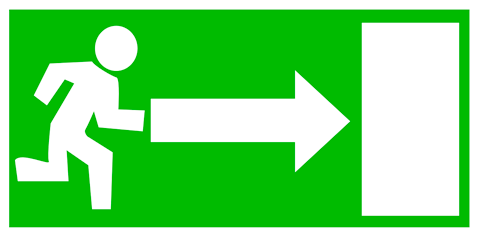Know Your PEEPs
You are probably thinking, what on earth is Joanne talking about – PEEPS?
PEEPS means Personal Emergency Evacuation Plan
 One absolutely key element of fire management planning today is to ensure that everyone that is in a building can be safely evacuated, including people with mobility issues, as well as disability issues including temporary issues such as a sports injury or pregnancy.
One absolutely key element of fire management planning today is to ensure that everyone that is in a building can be safely evacuated, including people with mobility issues, as well as disability issues including temporary issues such as a sports injury or pregnancy.
Being prepared for an emergency situation is an important part of any business’s plan. This will ensure that everyone can be safely evacuated from a building if an emergency should occur. Importantly, additional measures need to be considered and implemented to accommodate those who have temporary or permanent mobility impairment. Having such measures documented is called a PEEP, Personal Emergency Evacuation Plan. Or you can have a generic evacuation emergency plan. This will help to ensure the safety of everybody.
What does the law say on this particular matter?
You need to facilitate the evacuation of your work premises and it falls under the remit of a designated responsible person. The focus here is on individuals, such as the landlords, business owners, employers, and the facility managers, or risk assessors to make sure that everyone can get out safely. Under the Management of Health and Safety at Work Regulations 1999, employers have a duty of care to assess any risks that affect the health and safety of employees and put in a place of appropriate procedures to be followed in the event of a serious or imminent danger.
In order to comply with the Regulatory Reforms Fire Safety Order 2005, employers have a legal responsibility to ensure that in an emergency, all members of staff and visitors are able to evacuate safely. Any failure to do so could result in a prosecution. Should there be a fatality, an employer can be prosecuted for corporate manslaughter. The PEEP is used to protect the employees who require additional help when evacuating the building. For example, lifts being inoperable.
The PEEP should be completed in all companies, and obviously there needs to be training carried out.
Once the PEEP is complete, it’s important that any issues and concerns relating to the emergency evacuation are discussed by all staff. There is a free downloadable, and it’s www.evacchair.co.uk/news/peep-guide.
To understand the importance of how best to deal with an emergency situation in our risk assessments, it’s essential our business has an emergency evacuation. And this can be a staff that have disabilities, that have got a sports injury, people that are pregnant. So it needs to cover the whole range of your staff, whether it’s permanent or it’s a temporary basis. Evacuating a building needs to be done as quickly as possible. All evacuation aids need to be located such chairs, slide sheets, rescue mats, and stretchers.
When developing an evacuation plan, the correct products must be chosen to ensure they are the safest and quickest means of evacuation. All evacuation aids need to be located at a designated refuge points, which must be specified in the building evacuation plan. Each fire exit must accommodate both an able-bodied and the mobility impaired. All equipment has to be readily available and also needs to have documented checks.
I hope this is helpful information to be included in your Fire Plan documentation.
Any questions please email joanne@chestnutassociates.co.uk


